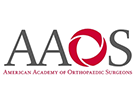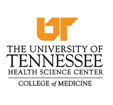Clinical Effect of Isolated Lateral Closing Wedge Distal Femoral Osteotomy Compared to Medial Opening Wedge High Tibial Osteotomy for the Correction of Varus Malalignment: A Propensity Score–Matched Analysis
Recent evidence questions the role of medial opening wedge high tibial osteotomy (mowHTO) in the correction of femoral-based varus malalignment because of the potential creation of an oblique knee joint line. However, the clinical effectiveness of alternatively performing an isolated lateral closing wedge distal femoral osteotomy (lcwDFO), in which the mechanical unloading effect in knee flexion may be limited, is yet to be confirmed.
The Effect of PRP Augmentation of Arthroscopic Repairs of Shoulder Rotator Cuff Tears on Postoperative Clinical Scores and Retear Rates: A Systematic Review and Meta-Analysis
The aim of this review and meta-analysis is to assess recent clinical trials concerning the combination of operative treatment of rotator cuff tears and the administration of PRP and its effect on clinical scores and postoperative retear rates. The trials were used to compare the combination of PRP treatment and arthroscopic rotator cuff repair to arthroscopy alone.
Clavicle Fracture Treatment: When Is Surgery Necessary?
Clavicle fractures, or broken collarbones, are typically treated without surgery. There is some evidence, though, to suggest that clavicle fractures may heal faster and more predictably when surgical repair is done.
How long does it take to recover from a torn ACL?
Damage to the anterior cruciate ligament (ACL) is a common yet severe knee injury. Most people who experience a torn ACL recover in 3–12 months, depending on injury severity and goals for rehabilitation.
How to treat hip bursitis
Hip bursitis is inflammation of the bursae of the hips. Treatment usually involves anti-inflammatory medication, physical therapy, and rest.
-
Dickson
-
ONEC1TY - Nashville






